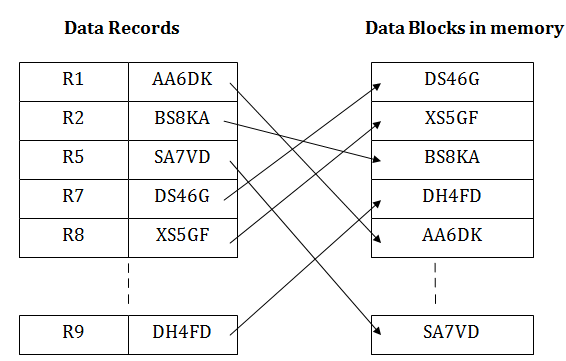Indexed sequential access method (ISAM)
ISAM method is an advanced sequential file organization. In this method, records are stored in the file using the primary key. An index value is generated for each primary key and mapped with the record. This index contains the address of the record in the file.

If any record has to be retrieved based on its index value, then the address of the data block is fetched and the record is retrieved from the memory.
Pros of ISAM:
- In this method, each record has the address of its data block, searching a record in a huge database is quick and easy.
- This method supports range retrieval and partial retrieval of records. Since the index is based on the primary key values, we can retrieve the data for the given range of value. In the same way, the partial value can also be easily searched, i.e., the student name starting with 'JA' can be easily searched.
Cons of ISAM
- This method requires extra space in the disk to store the index value.
- When the new records are inserted, then these files have to be reconstructed to maintain the sequence.
- When the record is deleted, then the space used by it needs to be released. Otherwise, the performance of the database will slow down.